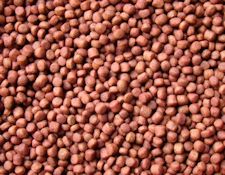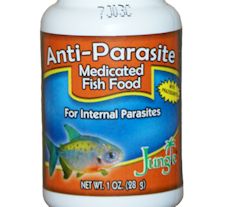Just like us, fish have to eat. Should you feed flake, pellet or tablet form? Should you feed your precious pets only processed food or only live food or both? To help you decide we have put together a variety guide to help you narrow down your choices. The first of fish foods would be processed foods or man-made foods.  Fish Food Flakes are a form of dried food, and used for top of tank and mid tank feeding fish. They can be made of an in house blend of ingredients by the aquarist or companies and may or may not be natural foods.
Fish Food Flakes are a form of dried food, and used for top of tank and mid tank feeding fish. They can be made of an in house blend of ingredients by the aquarist or companies and may or may not be natural foods.
The food is baked in the form of flakes to remove all moisture increasing shelf-life substantially. These flakes float gently down to the bottom of the tank, giving top and middle feeding fish time to eat before they get to the bottom.  Pellets are a little more specialized but are also made of in house blends by companies or the fish keeper themselves.
Pellets are a little more specialized but are also made of in house blends by companies or the fish keeper themselves.
They may contain completely natural foods sources or be chemically made. Some pellets are designed to float, some to sink and others to dissolve depending on the species of fish they are made to feed. Read labels to see which one matches your fish best. Tablets come in many forms, including wafers, sticks and granules.
Any of these are considered dried foods like flakes and pellets, and are designed to suit different purposes. Some are bricks that dissolve over time, used to feed fish while the fish collector is on vacation or away for a few days at a time. Many dried foods also contain beta-caratine to enhance bright colors of fish.  Many forms of fish food can be medicated, providing a clear, safe method of delivery directly to the fish.
Many forms of fish food can be medicated, providing a clear, safe method of delivery directly to the fish.
This method works very well in the case of parasites and is less stressful on fish than bath treatments. Bath treatments can effect algae growth, filtration among other things in the closed tank environment. There are freeze dried natural foods, such as brine shrimp, mosquito larvae, water fleas, blood worms, tubifex worms and more.
Most of these are also available in frozen form, usually in resealable packages. Proper care must be taken to keep frozen foods frozen so they do not spoil. Frozen fish food may also contain beef heart or other specialized purpose products in order to address specific needs in for specific species of fish.
Beef heart fish foods are for fish requiring higher protein concentrations in their food. One example of fish that need extra protein is the genus Symphysodon or commonly know as Discus or Pompadour fish. Some live fish foods include the above with earthworms and other 'feeder" fish included. Some species of fish eat live food whole, though most fish are opportunistic feeders, eating what ever is available in their feeding range.
Knowing where in your tank your fish will eat is essential, a bottom feeding fish will not eat floating food and vice versa. So what makes a fish food a quality fish food? A food that provides amino acids (to build protien), fat for energy, and is quickly digested is best. Food that can not be easily digested can lead to renal failure, ammonia build up in the tank, intestinal gas build up, swim bladder infections and more. A food with fish meal provides a good amount of protien while shrimp meal also provides protein but is used more for it's color enhancing properties.
Squid meal is highly nutritious, providing proteins, amino acids, fats and cholesterol (essential for fry and young fish). Brine shrimp also provide protein along with carotene (color enhancer) as well as acting like a natural laxative for the fishes' digestive system. Spirulina is an algae, enriching fish food with many essential vitamins like: raw protein, vitamins A, B1, B2, B6, B12, C and E, beta-carotene, color enhancing pigments, a whole range of minerals, essential fatty acids and eight amino acids. Spirulina is a great ingredient in your fish food.
Two newer ingredients, whole wheat and soy meal are non traditional ingredients, but gaining popularity. Whole wheat provides roughage for fish and is a good source of vitamin E which enhances color. Soy meal is high in protein and is usually substituted for fish and squid meals. Armed with these basic ideas with some research and knowledge of your fishes' eating habits, you should be able to make a reasonably good choice for your fish food.
Remember not to over feed your fish, doing so may not only directly harm the fish themselves, but also lead to algae build-up and cleaning the tank for more often than is needed!
